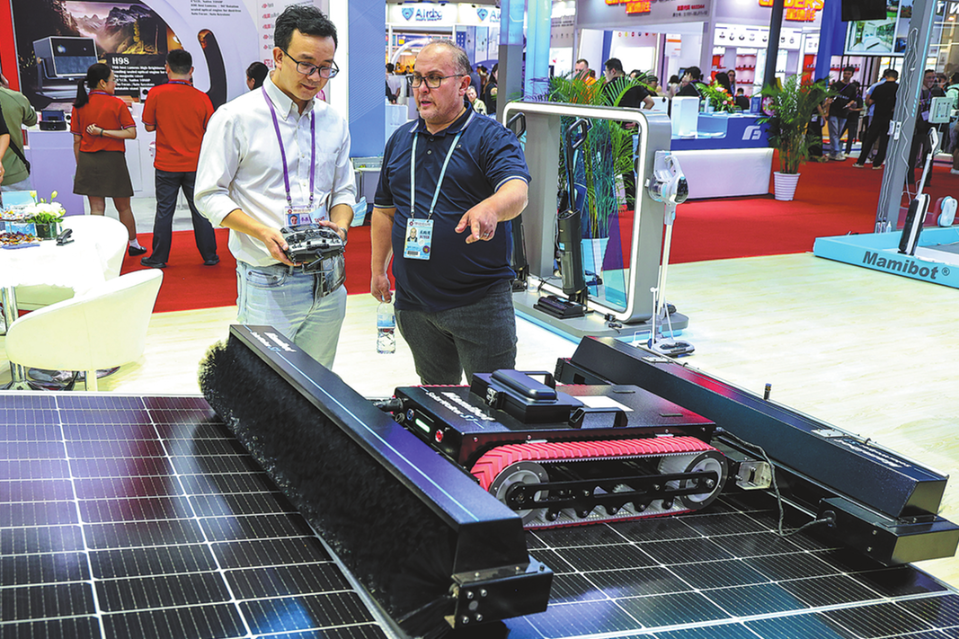APEC should play prominent role in driving innovation


The world has been grappling with one crisis after another — from the COVID-19 pandemic to the Russia-Ukraine and Israel-Palestine conflicts — and the resulting exacerbated global uncertainties. What has complicated matters further is the extension of the competition among major countries beyond economics into politics, with some countries using anti-market and unlawful measures to gain the upper hand. These developments have slowed global innovation, posing a serious challenge to economic cooperation in the Asia-Pacific region.
Yet the fundamental interdependence of countries remains intact even in the digital age, and de-globalization moves by some countries have not caused structural shifts. Instead, globalization is gaining momentum. North America remains at the forefront of groundbreaking innovations and East Asia continues its robust growth as an innovation hub, with Southeast Asia emerging as a dynamic force in the global arena. Together, these trends have created new, exciting opportunities for innovation across the Asia-Pacific.
North America, led by the United States, is home to more than one-third of the world's top scientists as well as leading enterprises in information communications technology, biotechnology, artificial intelligence and semiconductors. However, East Asia, comprising China — which includes Taiwan and the Hong Kong Special Administrative Region — and Japan and the Republic of Korea boasts the world's largest pool of R&D personnel and leads North America in terms of investment in R&D.
The East Asian region also has a robust manufacturing base with rapid growth in emerging industries, with China's transition to a moderately prosperous society in all respects helping boost consumer spending and creating the world's largest market for innovative products.
And Southeast Asia, led by Singapore and comprising emerging players such as Malaysia, Thailand, Indonesia and Vietnam, too, has been increasing investments to promote innovation, foster talents and advance high-tech industries.
To seize these opportunities, the Asia-Pacific must adopt new policy tools to drive innovation while building on its foundation of economic cooperation and shared prosperity.
Given the multifarious developments, countries across the world should establish a mechanism to share the policies and practices that have boosted innovation. For example, the US excels in investing in foundational innovation, incentivizing private sector dynamism, and fostering a culture of nationwide creativity. China leads in high-tech R&D, technology parks, tech entrepreneurship and tech-driven poverty alleviation, and Japanese policies foster disruptive innovation, while the ROK prioritizes talent cultivation and future growth industries. By sharing their development policies and leveraging their respective advantages, the East Asian economies can significantly enhance regional innovation capability.
Investing in talent development is essential to building an ecosystem that promotes innovation, and nurtures entrepreneurs, high-tech experts and scientists. Innovation service platforms should support startups by offering entrepreneurship training, access to venture capital, market expansion, legal advice and technical support. Digital skills training programs in areas such as AI, big data, and programming can improve workforce readiness. Additionally, international educational exchanges — such as joint degree and student exchange programs, and collaboration between universities — should be expanded to optimize regional education resources and foster cross-border innovation.
Considering the diverse innovation capacities of the economies in the region, the Asia-Pacific Economic Cooperation should establish a unified technology transfer platform to connect industries and research institutions across borders. Strengthened intellectual property rights protection and initiatives such as low-cost or open patent access can help expedite the spillover effects of advanced technologies, enhance local innovation capacity, and increase employment and income.
Besides, enterprises should take the lead in regional innovation projects to address shared challenges, such as climate change, pandemics, the digital economy and renewable energy. And multinational R&D initiatives should be made to fast-track technological breakthroughs and apply them to industry, while public-private partnerships must be encouraged by allocating more funds to promote innovation and enable venture capital to drive enterprise-led collaborations that integrate regional innovation resources.
Finally, an open policy should be adopted to advance scientific research and the results of such research should be made widely accessible. And APEC member economies should share large-scale research facilities and tools, such as supercomputers, advanced laboratories and data centers, to maximize their utilization capacity and output. By creating optimal research conditions, the region can achieve collaborative breakthroughs and shared innovation gains.
The author is a researcher at the Institute of Scientific and Technical Information of China.
The views don't necessarily reflect those of China Daily.
If you have a specific expertise, or would like to share your thought about our stories, then send us your writings at opinion@chinadaily.com.cn, and comment@chinadaily.com.cn.

































